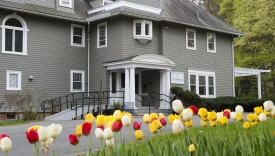Architectural Studies 152 - Islamic World
(Offered as ARHA 152, ARCH 152 and ASLC 142) This course, a gateway class for the study of art history and architectural studies, introduces the art, architecture, and urban planning of the Islamic world, from the origins of Islam in the seventh century to the contemporary moment. Among the questions we will pose are: When, how, and why was the Qur’an first copied as a written text? Why does the Dome of the Rock in Jerusalem, completed in 691–2 A.D., closely resemble Christian churches and shrines from the same period? Why did medieval Europeans judge objects from the Islamic world, especially those bearing Arabic script, to be sacred in nature? How did commercial and diplomatic exchanges with China and Viking Scandinavia impact the arts of Central Asia and the Middle East during the premodern period? What can contemporary comic books tell us about the visual logic of fifteenth-century Iranian manuscript painting? And how have nineteenth- and twentieth-century artists used photography and film to address the legacies of colonialism and Orientalism? We will attempt to answer these questions through close and careful analysis of objects in a range of media, from silver and rock crystal to silk textiles and video; cities and architectural sites in Spain and India, and the many places in between; and primary and secondary texts. Films, museum websites, and recordings will supplement readings, lectures, and discussions. No previous background is presumed, and all readings will be available in English.
Students will have the option to participate in this course in person or remotely. Students who are unable to attend synchronous class meetings and/or possess limited access to high-speed bandwidth will be accommodated.
Presence of the instructor:
- The students will meet together in a classroom, with the option of either recorded lectures or a remote synchronous experience when they are absent.
- The professor will be virtually present lecturing and leading discussion (synchronous).
- Class preparation (asynchronous).
- Smaller weekly discussion groups, divided into different time zones for off-campus students (synchronous), and posting on discussion boards (asynchronous).
- Professor will hold in-person office hours if possible.
Spring semester. Professor Rice.


